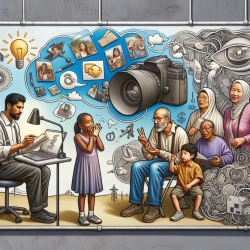Introduction
As a professional in the field of speech-language pathology, it is crucial to understand the broader social determinants that can impact the developmental and health outcomes of children and adolescents. The recent study, "Associations between child and adolescent marriage and reproductive outcomes in Brazil, Ecuador, the United States and Canada," provides valuable insights into how child marriage can influence reproductive outcomes. This knowledge can help practitioners tailor their interventions and advocacy efforts to improve health and developmental outcomes for young clients.
Key Findings from the Study
The study analyzed national birth registrations to assess the prevalence of child marriage and its association with reproductive outcomes such as preterm birth, small-for-gestational-age (SGA) births, and repeat births. The findings revealed significant variations across countries, with the prevalence of births to mothers under 18 years old being highest in Ecuador and Brazil, and lowest in Canada and the USA.
Key findings include:
- Married mothers aged 20-24 years had lower odds of preterm birth and SGA across all four countries.
- Unmarried mothers under 18 years old had higher odds of preterm birth in all countries, with the association being stronger in Brazil and Ecuador.
- Child marriage was associated with higher odds of repeat births, particularly in the USA and Canada.
Implications for Practitioners
Understanding these associations is critical for practitioners who work with children and adolescents, as early marriage can have long-term implications for health and development. Here are some ways practitioners can use these findings to improve their practice:
- Advocacy and Education: Use the data to advocate for policies that delay marriage and promote education for girls. Educate families about the potential health risks associated with early marriage and childbirth.
- Targeted Interventions: Develop targeted interventions for young mothers, particularly those who are unmarried and under 18, to support healthy pregnancies and child development.
- Collaboration with Schools: Work closely with schools to provide support and resources for young mothers, helping them continue their education and improve their long-term outcomes.
Encouraging Further Research
While this study provides a comprehensive overview of the associations between child marriage and reproductive outcomes, further research is needed to explore the underlying mechanisms and cultural contexts that contribute to these outcomes. Practitioners are encouraged to engage in or support research efforts that examine these factors in greater detail.
Conclusion
By understanding the complex interplay between child marriage and reproductive outcomes, practitioners can better support young clients and advocate for systemic changes that promote healthier futures. To delve deeper into the findings and methodology of this study, I encourage you to read the original research paper: Associations between child and adolescent marriage and reproductive outcomes in Brazil, Ecuador, the United States and Canada.










